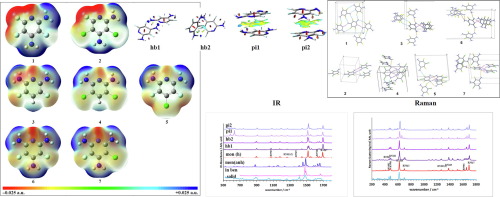В журнале Spectrochimica Acta Part A: Molecular and Biomolecular Spectroscopy, (IF 4.831) опубликована статья в соавторстве с сотрудниками Института: к.х.н. Т.В. Вагановой (снс, ЛГетС), д.х.н. Е.В. Малыхина (гнс. ЛЭАСМ) и д.х.н. Ю.В. Гатилова (внс, ГРСА ЦСИ)
Synthetic approach for the control of self-doping in luminescent organic semiconductors
Enrico Benassi, Tamara Vaganova, Evgenij Malykhin, Yurij Gatilov, Lazzat Nurtay, Haiyan Fanc
Spectrochimica Acta Part A: Molecular and Biomolecular Spectroscopy
Volume 281, 15 November 2022, 121632
Available online 16 July 2022
doi: 10.1016/j.saa.2022.121632
Highlights
- Mg doped CuCrO2 is a promising inorganic hole transport material for perovskite solar cells.
- The analyzed device showed that 50 nm of both ETL and HTL thickness is quite sufficient to produce the highest efficiency.
- Pb free, environmentally benign PSC performs outstanding efficiency 27.53% obtained through simulation.
- The temperature gradient is almost constant (.0125) at higher temperature from 320K offer greater device stability.
Graphical abstract
Six polyhalogenated di- or triamino pyridines were synthesised and structurally characterised by means of single crystal X-Ray diffraction. Their supramolecular synthons were studied by means of vibrational (FT-IR and Raman) spectroscopies and Quantum calculations. Features identified in spectra of the solid samples were distinctive of the formation of supramolecular (in particular, hydrogen bond) interactions. Quantitative correlations were established among the dimerisation energies, the ring structure and quantitative characteristics of spectra.

Abstract
Supramolecular synthon is identified as a unit and provides important structural and energetic information in the study of organic crystals. However, the direct estimation of the supramolecular interaction remains challenging. In the present work six polyhalogenated di– or triamino pyridines were synthesised, their crystalline structure was characterised, and corresponding supramolecular synthons were studied using a combination of quantum mechanical calculations and FT–IR and Raman spectroscopy. Some distinctive features were identified especially for three vibrational normal modes (RNMs) related to the pyridine ring (viz. RNM1, RNM3 and RNM7) in the vibrational spectra (FT–IR and Raman) of the solid samples, which are due to the supramolecular interactions, hydrogen bond (hb) in particular, according to the quantum mechanical calculations. The comparison between the IR and Raman spectra of experimental and simulated results indicates that the adjacent intermolecular hydrogen bonds between two same molecules extensively exist in the solid samples. Moreover, some quantitative correlation was established among the dimerisation energies for hb dimers (hb1 dimers for compounds 1 and 2), the ring structure defined by the distribution of the substituents and quantitative characteristics of the vibrational spectra, for instance, the splitting magnitudes for RNM3(2) in IR spectra and the peak gap between RNM1 and RNM2 in Raman spectra.
Альметрики:


